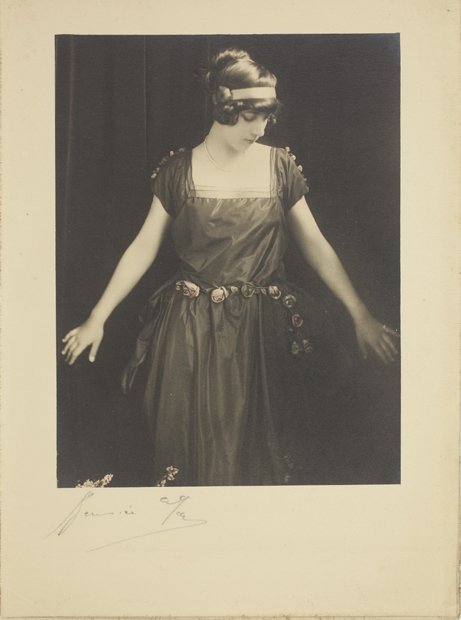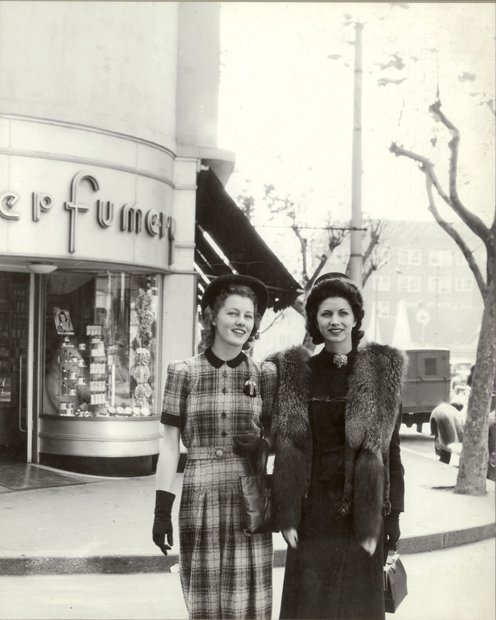Gallery: Fashion in Australia’s history

Eleanor Elizabeth Stephen (ca. 1855) sits in a lovely crinoline dress. She is likely attached to a steel rod at her neck to hold her still for the photo. “People think why are they looking so serious, but it’s quite difficult to hold a smile still for the length of time required. It could be up to minute in these early days,” says dress historian Margot Riley.

Professor George Parker (ca. 1858), a local celebrity, who became renown after winning all the prizes at a sword contest Dawes Point Battery under the Sydney Harbour Bridge. According to Margot his dress is completely fanciful; “It doesn’t relate to any military regiment that we can identify”. George later ran a fencing school in Sydney.

The 1860s brought the invention of glass-plate negatives, which meant that photographs were reproducible and more widely distributed. Women were suddenly able to see a broader cross-section of fashions and became more fashion conscious as a result (Parramatta ca. 1865).

John William Richard Clarke (ca. 1875), bookseller and stationer. Regular people could sometimes afford photographs when images became reproducible, allowing us to see the day-to-day fashions sported by the middle-class.

Opera singer Madame Carandini and her three daughters (ca. 1876) in the era when it became fashionable to collect photos of public figures.
“Once you start to have the [reproducible photos] being used, you do start to have photographs of the queen, and actresses, and society leaders, and authors, and celebrities…and people start to collect them,” says dress historian Margot Riley. “People put together photo albums…and you look at these 19th century photo albums and you see Queen Victoria and you think ‘hang on a minute these people don’t know Queen Victoria’. But it’s a bit like having a fan page – it’s a bit like Pinterest. People sort of gathered all these pictures together of people…and then you’d sit in your drawing room and look at these images.”

Mrs Annie Burbury (ca. 1895) displays the very practical fashion of an Aussie working girl in the late 19th century, reflecting the small Australian population and the need for women to join the workforce.
“It probably doesn’t look all that practical to the modern eye, but it’s actually incredibly practical compared to what would have been worn in the era just before this. For one thing she’s wearing a blouse and skirt and they’re not corseted – she will have her corset on underneath – but her dress doesn’t have whalebone stays in it…it doesn’t have a great, big train behind it. So it’s actually a very modern looking outfit. Really it is the business suit; you’ve got blouse, jacket skirt,” says dress historian Margot Riley.

Zoe, Mrs Mary, Marjorie and Chloe Gullick, outside Altoncourt, Killara (ca. 1909). Zoe, Marjorie and Chloe are wearing wide-brimmed sun hats, a look which Margot Riley says Australians pioneered.

Elizabeth Mary Dangar (ca. 1918) aged 18-20 years old posed in what was probably a debut photo, just after the first world war. Elizabeth, who later became an author, came from a wealthy pastoralist family after whom Dangar Island on the Hawkesbury River is named.

Flapper fashion from the all-girl American 20-piece jazz band, ‘The Ingenues’ while in Sydney (ca. 1928).

Valma Ashcroft (later Burrows, at left), one of Australia’s earliest paid fashion models, and another model in Australian fashion outside the Minerva French Perfumery, Kings Cross, 1941.

American model Carmen Dell’Orefice, who this year became known as the world’s oldest working model, at the Neiman-Marcus American Fashion parade for David Jones (ca. 1950).

Racegoers at Randwick Raceourse on Melbourne Cup Day (ca. 1965). It was an era of colourful but conservative fashion in Australia. British model Jean Shrimpton caused quite a stir in the same year when she turned up at Flemington racecourse with a skirt 7.5cm above the knee.

A model strikes a pose 1968 in ready to wear fashion from former Sydney retail store, Mark Foy’s (in the background) whose heritage listed grandure now houses the District Court.

Model on the steps of the Mitchell Library (ca. 1950).

Nicole Kidman in 1983 in the fashion of the day. Colour and a riot of print would become a big part of Australia’s fashion scene in the ’80s, driven by well-known Australian designers Jenny Kee and Linda Jackson. In 1983 Karl Lagerfeld would use Jenny Kee’s black opal print as the feature fabric in his collection for Chanel.

Romance was born, a label by Australian designers Luke Sales and Anna Plunket, parade in the Mitchell Library reading room during Rosemount Australian Fashion Week, 2011.

Home Topics History & Culture Gallery: Fashion in Australia’s history


